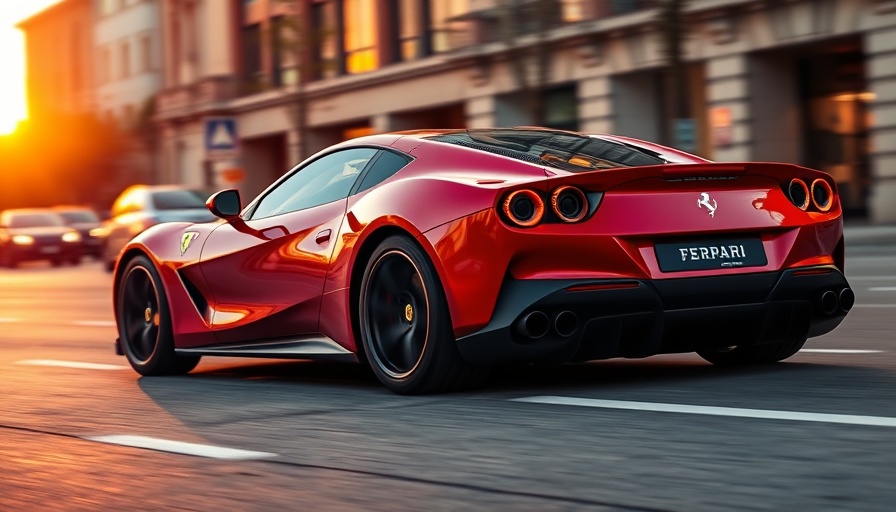
Ferrari's Leap into the Future: An Electric Revolution
In a world racing towards sustainability, Ferrari is set to unveil its first-ever electric sports car next spring, with sales commencing in October 2026. This move marks a significant shift for the iconic brand, known traditionally for its high-performance gasoline engines. The decision to embrace electric vehicles (EVs) aligns with the increasing demand for greener automotive solutions and the push for brands to reduce their carbon footprints.
Why Electric Cars are the Future of Performance
As consumers become more environmentally conscious, there’s an undeniable shift in the automotive industry towards electric vehicles. Not only do EVs promise lower emissions, but they also present exciting opportunities for performance enhancements. Electric motors provide instant torque, leading to faster acceleration and an exhilarating driving experience. Ferrari's entry into this realm signals that high-performance cars can remain thrilling while also being eco-friendly.
The Design Philosophy Behind Ferrari’s Electric Sports Car
Ferrari’s design team is dedicated to ensuring that their electric vehicle retains the brand's core identity. This is crucial; the electric sports car is not just about being quiet and efficient; it must also embody the soul of Ferrari. Expect cutting-edge design features that enhance aerodynamics and aesthetics, setting the stage for performance that rivals its gasoline counterparts. In this vein, Ferrari engineers emphasize that the emotional connection owners feel when driving a Ferrari remains intact, even with an electric powertrain.
Challenges and Opportunities in the EV Market
While the future looks bright for electric performance, Ferrari will also face significant challenges. Battery technology and infrastructure are still evolving. Although EV range continues to improve, the ability to charge quickly and efficiently will be essential for maintaining the performance-focused reputation that Ferrari has built. Additionally, competing against established EV manufacturers, such as Tesla and newer entrants like Rivian, will test Ferrari's innovation and brand loyalty.
What This Means for the Automotive Industry
This ambitious step by Ferrari may set precedence, pushing other luxury and performance brands to reevaluate their strategies towards electrification. As automotive technology continues advancing, consumers can anticipate an exciting landscape filled with innovative electric sports cars that do not compromise performance or prestige. This could lead to an increase in the price of EVs, but the long-term benefits, such as lower maintenance and fuel costs, should appeal to prospective buyers.
Your Takeaway: What to Expect
As we await Ferrari’s official debut, enthusiasts and potential buyers should keep an eye on what's next for the brand. From the lively discussions on social media to groundbreaking technological developments, it’s clear that Ferrari’s electric sports car won't just satisfy eco-conscious consumers but also pave the way for a more sustainable future in sports car performance. A shift in attitudes towards luxury and sustainability may redefine what it means to own a sports car.
While sales may not begin until late 2026, the anticipation surrounding the event showcases how this historic move can influence future automotive trends. With manufacturers ramping up electric production, the race to create the best-performing EV is officially on.
Conclusion: Embracing Change Within the Automotive Community
We stand at a pivotal moment in automotive history, where tradition meets innovation. Ferrari's commitment to producing an electric sports car offers valuable insights into the automotive future, enticing both car aficionados and environmental advocates alike. As the countdown continues to the vehicle's reveal, consider how your own vehicle choices can contribute to a more sustainable automotive ecosystem.
 Add Row
Add Row  Add
Add 




Write A Comment